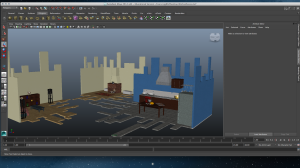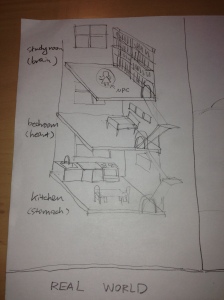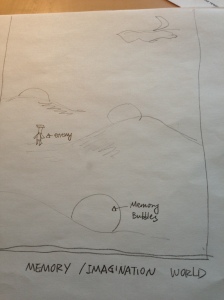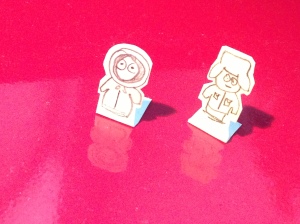Real World Interaction
Our conclusion to this meeting was that in the real world, the NPCs will have idle animations to create visual noise on such a static screen. They will also be doing an action that changes the visual look of the apartment. This could be cleaning, decorating, rearranging, etc. Still needs to be determined but will help clue in which floor is most populated and developed.
When you populate the apartment, the floor with the most NPCs is the dominate personality at the time, and is what will reflect in terrain and physics of the memory world. If you give the NPCs that are in the apartment resources from the memory world, they will in turn give you abilities or resources as well. There is a cap to how many resources they will accept. These abilities are not tied or limited by your dominate personality at the time.
You can bring back duplicates of characters, and they can be on the same floor together.
Narrative
Check out Laura’s ideas here.
We thought it was a good direction but needed to tie in more with the minute to minute gameplay and mechanics. We also asked her to think of some specific memory ideas.
Bubble Interaction
This is homework to think about and come in Thursday (at 4:30pm) with some ideas to discuss
==== TO DO ====
Mtg Thursday @ 4:30pm, replay lab.
All – Memory interactions. This will be the focus of our discussion next week. How will they play out, how will they be generated, what are we trying to convey?
Steve – testing new meshes for the terrain and turning it into an actual map — create a test scene, quick mock up of glow intensities on characters representing their stats
Dhanesh – player states updated based on NPC stats, solid point and click system in the apartment
Katelyn – concept art, fix memory bubble, adjust memory scene, gdd



